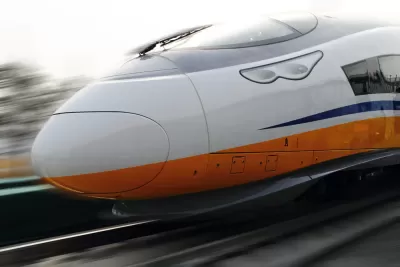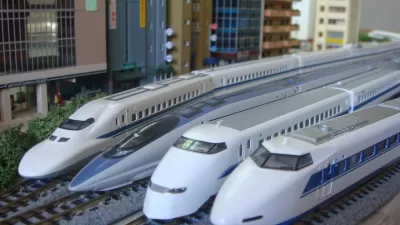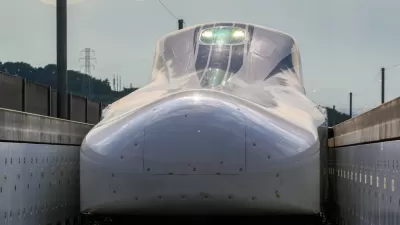The high-tech, high-speed rail system is ultimately planned to run from D.C. to New York.

Luz Lazo at the Washington Post delves into a new environmental report on the proposed Northeast Maglev line from Washington, D.C. to New York.
The report deals with the first leg of the system, a planned 40-mile route from D.C. to Baltimore. One notable update is that project officials have identified the Mount Vernon Square area as the possible end point on the D.C. side. Multiple locations are still under consideration on the Baltimore end, including Camden Yards in the Inner Harbor and the Cherry Hill neighborhood in South Baltimore. Lazo writes:
"The Cherry Hill site offers opportunity for development in an area that hasn’t seen much investment and would be more easily accessed by riders getting to the station by car because it is less congested than downtown. The site would have a direct connection to the Maryland Transit Administration’s Cherry Hill light-rail station, and project officials say there is opportunity for a shuttle service to downtown as well as a water ferry to the Inner Harbor."
The high-speed system is expected to transport commuters from Washington to New York in an hour. The trip between D.C. and Baltimore would take 15 minutes, according to the report. That leg has a projected cost of up to $12 billion. It has secured $5 billion from Japan, where magnetic levitation technology is being developed, and $28 million from the Federal Railroad Administration.
The federal environmental review process is scheduled to be completed in early 2020, Lazo reports. The project is currently on track to begin operations in 2027.
FULL STORY: D.C.’s Mount Vernon Square eyed for high-speed maglev train station

Alabama: Trump Terminates Settlements for Black Communities Harmed By Raw Sewage
Trump deemed the landmark civil rights agreement “illegal DEI and environmental justice policy.”

Planetizen Federal Action Tracker
A weekly monitor of how Trump’s orders and actions are impacting planners and planning in America.

The 120 Year Old Tiny Home Villages That Sheltered San Francisco’s Earthquake Refugees
More than a century ago, San Francisco mobilized to house thousands of residents displaced by the 1906 earthquake. Could their strategy offer a model for the present?

In Both Crashes and Crime, Public Transportation is Far Safer than Driving
Contrary to popular assumptions, public transportation has far lower crash and crime rates than automobile travel. For safer communities, improve and encourage transit travel.

Report: Zoning Reforms Should Complement Nashville’s Ambitious Transit Plan
Without reform, restrictive zoning codes will limit the impact of the city’s planned transit expansion and could exclude some of the residents who depend on transit the most.

Judge Orders Release of Frozen IRA, IIJA Funding
The decision is a victory for environmental groups who charged that freezing funds for critical infrastructure and disaster response programs caused “real and irreparable harm” to communities.
Urban Design for Planners 1: Software Tools
This six-course series explores essential urban design concepts using open source software and equips planners with the tools they need to participate fully in the urban design process.
Planning for Universal Design
Learn the tools for implementing Universal Design in planning regulations.
Clanton & Associates, Inc.
Jessamine County Fiscal Court
Institute for Housing and Urban Development Studies (IHS)
City of Grandview
Harvard GSD Executive Education
Toledo-Lucas County Plan Commissions
Salt Lake City
NYU Wagner Graduate School of Public Service





























